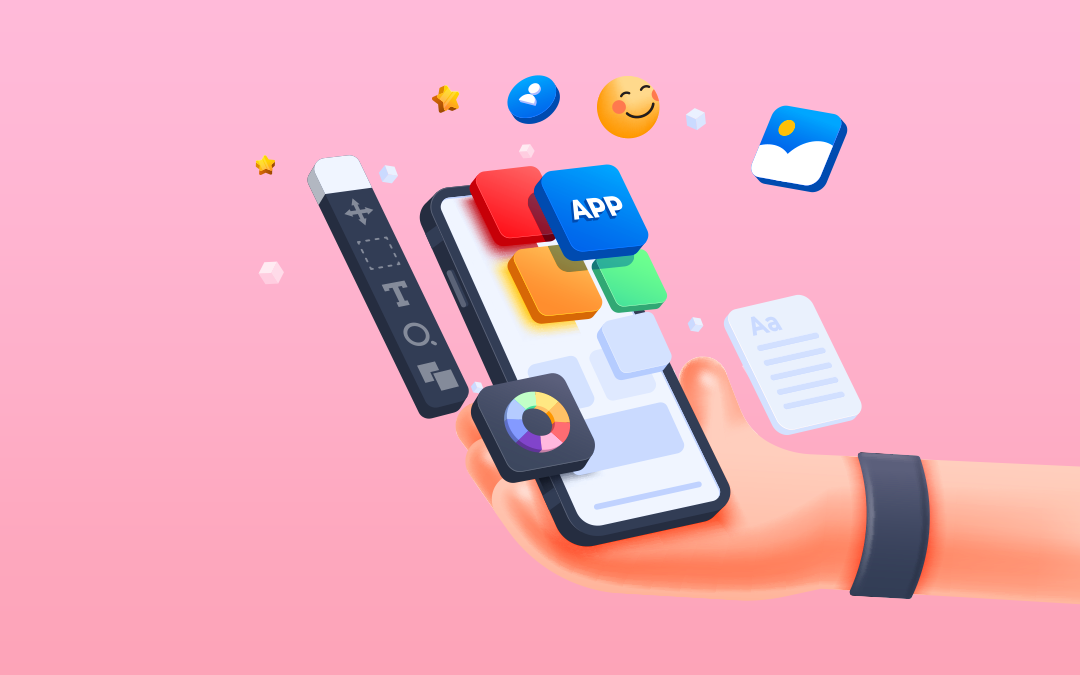Mobile apps have become indispensable in our daily lives. Over the decades, we’ve grown increasingly accustomed to it.
It’s not just about rental, now every business is required to serve its users with an app—and UI & UX are the heart of it.
While this article emphasizes the importance of UI and UX design for rental apps, we’ll also explore:
- Roles of UI/UX
- Key UI/UX features
- Steps to implement effective UI/UX
Let’s dive into this together!
What are UI and UX?
User Interface (UI)
This involves the visual elements of an app, such as buttons, typography, color schemes, and layouts. A well-designed UI makes the app visually appealing and easy to use.
User Experience (UX)
UX focuses on the overall feel and usability of the app. It addresses how users navigate through features, complete tasks, and interact with the app to achieve their goals efficiently.
While UI attracts users initially, UX ensures they stay engaged. Together, they create a cohesive and enjoyable experience that can define the app’s success.
The Role of UI & UX in rental app development
1. Enhancing first impressions
Users form an opinion about an app within seconds of opening it. A sleek, intuitive UI design can create a positive first impression, encouraging users to explore further.
For example, a car rental app with visually distinct categories and clear icons for vehicles ensures users can quickly find what they’re looking for.
2. Simplifying navigation
Rental apps often have diverse features: searching for listings, managing bookings, payment processing, and customer support. A user-friendly UX design ensures these features are accessible and easy to navigate.
3. Building trust through design
Trust is a vital factor in rental services. Well-designed UI elements like secure payment icons, transparent pricing, and visible customer reviews can make users feel confident in their transactions.
4. Catering to diverse user needs
Rental apps cater to various demographics, from tech-savvy millennials to less experienced users. A good UX design ensures that the app is intuitive for all user types, regardless of their familiarity with technology.
The benefits of great UI & UX for rental apps
1. Increased user retention
A seamless user experience encourages users to return to the app. For instance, simple rebooking options or intuitive search filters can make the app indispensable for users.
2. Higher conversion rates
A well-structured UI and UX reduce friction in the user journey, guiding them smoothly from search to booking. This can significantly boost conversion rates.
3. Competitive edge
In a saturated market, superior UI and UX can differentiate your rental app. Users are more likely to recommend an app that’s visually appealing and easy to use.
4. Reduced development costs
Investing in UI/UX design early on can save costs in the long run by minimizing issues that require redesigning or fixing later.
Key UI & UX features
1. Intuitive search and filtering
Rental apps must offer a robust search feature with filters for price, location, category, and availability. A well-designed search bar and dynamic filters simplify the user’s task.
2. Personalized recommendations
Leverage AI-driven UX to offer personalized suggestions based on user preferences or past bookings. For example, a vacation rental app can suggest properties similar to a user’s previous choices.
3. Responsive design
Ensure the app functions seamlessly across all devices, including smartphones, tablets, and desktops. A responsive UI adapts to different screen sizes, providing a consistent experience.
4. Transparent booking process
A clutter-free, step-by-step booking process is crucial. Clear progress indicators and confirmation messages enhance user trust and confidence in the transaction.
5. Real-time updates
Features like real-time availability, notifications for bookings, and tracking options for rental deliveries add to a positive UX.
Common mistakes in UI & UX design
Avoid these pitfalls to ensure a seamless user experience:
- Overcomplicating the design: A cluttered interface can confuse users and drive them away.
- Ignoring user feedback: Not considering user input can lead to poor design choices.
- Lack of testing: Skipping usability testing can result in a frustrating user experience.
- Slow load times: Unoptimized UI elements or backend delays can lead to high bounce rates.
Steps to implement effective UI & UX
1. User research
Understand your target audience, their preferences, and pain points. Conduct surveys, interviews, and usability testing to gather insights.
2. Prototyping and wireframing
Create prototypes and wireframes to map out the user journey. Test these designs to identify areas of improvement before development.
3. Focus on accessibility
Ensure the app is accessible to users with disabilities by incorporating features like screen readers and high-contrast designs.
4. Regular updates
User needs evolve over time, so continually update the app to address feedback and incorporate new trends.
Final note
The UI & UX can break or make your rental app.
A well-designed interface paired with a seamless user experience can elevate your app and set you apart from competitors.
Ready to design a rental app that users love? Focus on crafting a UI/UX experience that leaves a lasting impression.
